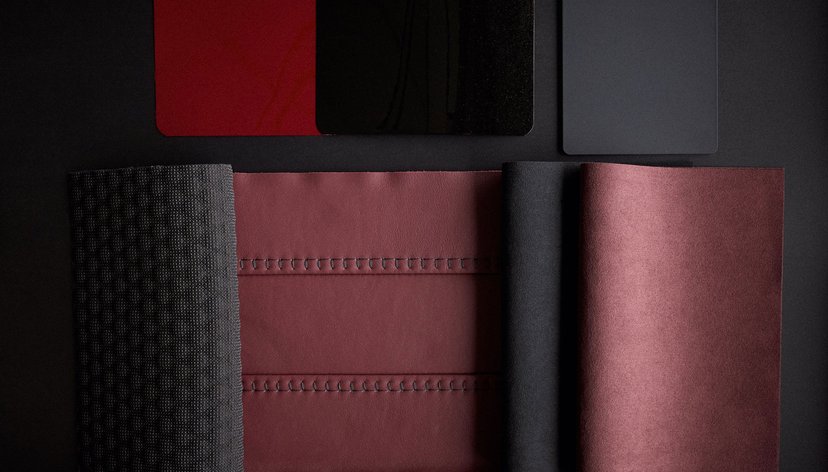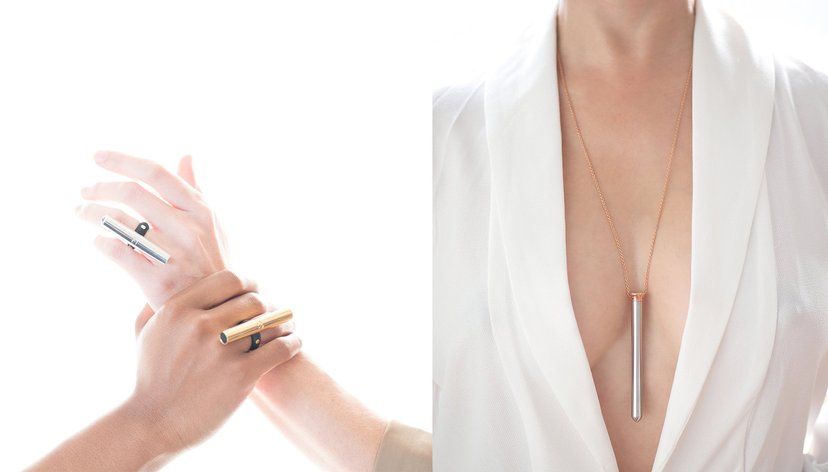
Key details
Date
- 6 January 2021
Author
- Lisa Pierre
Read time
- 5 minutes
Sophie Horrocks graduated in 2020 in MA/MSc Global Innovation Design. Her final project Sensaura gained recognition from Sir Jony Ive KBE, Professor Gerry McGovern OBE and Yves Béhar as part of RCA2020. The project has won the ARTSTHREAD global design graduate show award for Design for Social Good and the Helen Hamlyn Award for Creativity. Sophie believes that design has the power to improve human quality of life. In order to achieve this though, we must recognise the value of empathy-driven, not just evidence-based design.
Key details
Date
- 6 January 2021
Author
- Lisa Pierre
Read time
- 5 minutes
“The role of the designer is crucial in order to stimulate a dialogue between scientists and researchers developing these technologies/ products with users and the wider public to discuss and consider some of the ethical and philosophical challenges that are inevitable when working in this realm of design and technology.”
Human-centred designer, researcher and strategist
Congratulations on both of your awards for Sensaura. What did it mean to you to win these awards?
I’m of course delighted and feel very honoured that my work has gained recognition from people in the fields of inclusive design and design for social good, whose work I so greatly admire. I think it goes without saying though that I don’t think the project would have been achievable without the help and support of all the collaborators and users I worked with along the way – so for that I’m incredibly grateful.
For me though, I think the greatest value of the awards has come from the ripple effect of subsequent opportunities. This has allowed me to expand my network in the field - and hopefully – enrich the work I’m able to do in areas of inclusive design and design for social impact – both within Sensaura and beyond this.
Can you tell us a bit more about the project?
Essentially, Sensaura is an inclusive design solution for blind and partially sighted users to navigate indoor and outdoor environments. It proposes a spatial audio language which can be communicated through wearable technology, to allow hands-free, non-visual navigation.
The project really started about a year and a half ago, whilst I was in my first year of GID (Global Innovation Design). I was carrying out some research for a different project where I was working with blind and partially sighted users. I met some incredibly inspiring people through the research process and although the project was only short, just three weeks, I became fascinated by the challenges faced by this community and continued researching with users whilst I moved to Tokyo and New York with the course. Carrying out this global research highlighted the universal challenge faced by this community - of how to navigate not only independently but intuitively.
Although many technical solutions are being developed and exist in this space, most focus heavily on how to process visual information from the environment – rather than considering how the user experiences visual information through a different sense(s). This was where I really wanted to focus my efforts.
The project touches on a lot of different specialisms within design and engineering. Taking a collaborative approach was pretty essential to creating something desirable yet feasible. I was able to work/ consult with computational designers, musicians, radar specialists, urban planners as well as working closely with users who I met through a focus group I ran at the Thomas Pocklington Trust when I returned to London after my travels. I think having this holistic overview of the problem area enabled me to view it from a different perspective than many others have.
Do you feel that recent innovations in design have not been geared towards the differently abled, and do you feel that, going forward, more design should focus on making all environments easier to navigate for all people?
I think there is always more to be done in this space and future environment designs should of course be designed to be navigated by everyone – no matter what their abilities. Kat Holmes describes the benefits of such an essential approach – it is not only beneficial for people with permanent disabilities (i.e. a user with one arm) but can also benefit someone with a situational disability (i.e. a parent carrying a child in one arm).
The challenge I see though, which was something I addressed in my research of Sensaura, is that it is not necessarily a feasible or viable option to propose redesigning the entire environment in order to make our spaces more accessible in the shorter term. More easily we can redesign our perception of the environment – which is where Sensaura aims to intervene.

You mention people “hacking their own bodies and senses to augment their human capabilities” – do you think that we are entering a new age of augmentation and how do you see current designers helping in this?
Out of context “hacking” sounds slightly aggressive! But could you also possibly argue that the age of augmentation has already begun? I have always been fascinated by the notion of what our boundaries as humans are, what distinguishes us from the objects and environments we interact with (both physically and mentally). How do we embody something artificial? I think such an understanding is crucial and incredibly powerful when it enables humans – examples would be prosthesis and neural prosthesis to restore lost function in sensory, cognitive and motor impaired patients. Such interventions though, especially when applied outside the context of health and wellbeing, can often lead to conversations around dystopian or “science fiction” futures.
I think for me, the role of the designer is crucial in order to stimulate a dialogue between scientists and researchers developing these technologies/ products with users and the wider public to discuss and consider some of the ethical and philosophical challenges that are inevitable when working in this realm of design and technology.
Do you feel that science fiction is now becoming science fact? Where do you think we can go next?
I think speculative (rather than science) fiction can be an incredibly powerful tool for strengthening our relationship and understanding of how we wish to choose to progress from our present to our future, I think the starting point for me would always be human/ nature centred, rather than technology centred. I think often science fiction can see technology in and of itself as the “future”, rather than viewing it as a means to enrich or enable our lives as humans.
The more diverse perspectives that we can bring into these conversations - the better off we will be, to ensure that we are working towards a future which considers and empowers as many people as possible.
What is the reality of availability and scale versus cost and the reality of making innovative design products something for all?
I think that more companies should view inclusive design from the perspective that: by enabling their products to be used by more people, they are most likely bettering the user experience for everyone and reaching a wider customer base by doing so.

You say that you have a desire to understand us as humans. How does innovation design link into this?
I think design should strive to be as intuitive and delightful as possible, but to achieve this, we need to understand the psychology behind user experiences. For me, design and psychology are inextricably linked. I believe that innovations in technology should focus on enhancing our human experiences rather than being ‘innovative’ for the sake of it.
What motivates and inspires you creatively?
People. For me, there’s so much beauty and such a source of inspiration that can be found in the ‘everyday’. I love observing people, how they go about their everyday lives, noticing how people adapt certain situations to better them, and recognising the little nuances that each of us brings to solutions when faced with the same problem or task. For me, design is about celebrating those nuances.
You had already worked as a designer in the UK and Hong Kong by the time you came to study at the RCA. How did your practice evolve while you were at the RCA?
I came to the RCA from a stronger design background than a scientific one – but I knew I had a strong passion for neuropsychology research, design for social impact and understanding multisensory perception. Looking back, I’m not sure I knew how these interests of mine would develop through my work, but I was very much keen to see how immersing myself within the contrasting environments of Imperial and RCA would allow these seeds of thought to grow.
For me the beauty of GID lies in its ability to allow you to learn from cross-cultural and cross-disciplinary thinking – with the immersive learning experience going far beyond what might be traditionally classified as a “classroom”. The ability to work with and learn from people who come from such diverse backgrounds yet who share the same passion for positive change has been utterly incredible.
What is next for you - what projects are you working on currently?
Covid has of course been challenging but it’s just a question of finding the opportunities still. I think it’s exciting that inclusive design is increasingly recognised as critical in technology and other companies. I am currently looking at a number of ways to use my experience and skills to continue creating products and services that make a difference to people’s lives.

